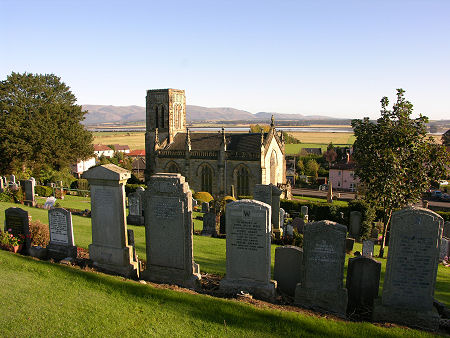 The Church at Airth, North of Kinnaird |
James Bruce lived from 14 December 1730 to 27 April 1794. Although intending to become a lawyer, and then a wine merchant, he went on to explore large parts of North Africa and Ethiopia and reached the source of the Blue Nile. The wider picture in Scotland at the time is set out in our Historical Timeline.
James Bruce was born at the family home, Kinnaird House, which today stands close to a loop of motorway at the start of the M876 spur to the Kincardine Bridges south of the village of Airth. After an education at Harrow School in England, and Edinburgh University, Bruce was destined for a career as a barrister. Things took a sudden change of direction when he married the daughter of a wine merchant in January 1754, and instead entered his father-in-law's business. Bruce's wife died in October 1754, and to overcome his loss he travelled to Spain and Portugal.
Here he was meant to be furthering his knowledge of wine production, but instead he spent his time studying oriental manuscripts, going on to learn both Arabic and Ge'ez, the traditional language of Ethiopia. Bruce inherited the Kinnaird Estate on his father's death in 1758, leaving him with the means to pursue his interests.
In 1762 Bruce was appointed British consul in Algiers, where he arrived after an extended period studying the antiquities of Italy. From 1765 Bruce began travelling widely on his own account, passing himself off as a medical doctor when necessary. In this way he covered much of the Mediterranean and North Africa before setting for himself the quest of discovering the source of the River Nile. On 14 November 1770 he led a party which reached Lake Tana, the source of the Blue Nile. Whether Bruce can be considered to be the first European to reach the lake has been the subject of considerable debate, but his achievement was nonetheless considerable. In 1790, he published a record of his travels: Travels to Discover the Source of the Nile, In the Years 1768, 1769, 1770, 1771, 1772 and 1773.
